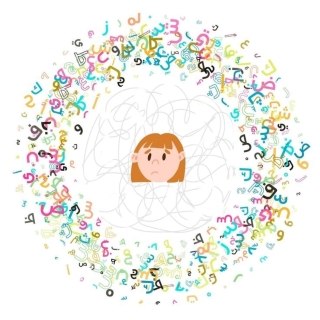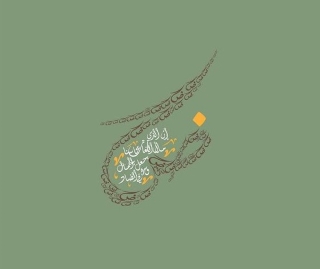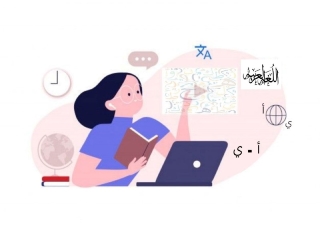Overcome the difficulty of writing Arabic letters with simple steps!

Overcome the difficulty of writing Arabic letters with simple steps!
- Writing in Arabic is one of the challenges faced by many language learners, especially if they have not mastered the basics of writing correctly. The Arabic language is unique in its writing, as letters change their form depending on their position in the word—either connected or separated. In this article, we will discuss how to overcome the difficulty of writing Arabic letters, focusing on the separated letters, which are among the greatest challenges for beginners.
1. Separated Letters in Arabic
Separated letters are those that are written separately and do not connect to the letters before or after them in the word. Some letters in Arabic are never connected to any other letters and remain separate, and it’s essential to learn these letters and use them correctly when writing.
Examples of Separated Letters
The separated letters include many letters in the Arabic alphabet, which do not connect to the following or preceding letters in the word, such as:
- أ, د, ذ, ر, ز, و
Examples in Writing:
- أ: in the word "أب"
- د: in the word "دائم"
- ر: in the word "رجل"
- و: in the word "وردة"
These letters remain the same in any position they appear in, whether at the beginning or the end of a word.
2. Practicing Writing Separated Letters
One of the most important steps to strengthen your writing skills in Arabic is to practice writing separated letters correctly:
- Write the letters separately: Start by practicing writing each separated letter individually. Use lined paper or a computer program to write the letters in rows.
- Focus on separated letters: After learning connected letters, dedicate time to practice writing the letters that do not connect with others. Write them several times to achieve accuracy.
Example of Separated Letters:
- Write the letters "أ، د، ر، ز، و" in a single row.
- Write words that contain the separated letters: "أب", "دائم", "رجل", "وردة".
3. Distinguishing Between Connected and Separated Letters
It’s important to distinguish between connected letters (those that link to the letters before or after them) and separated letters (those that do not connect). For example, letters like "أ", "د", "ر", "ز", and "و" are separated and stay the same in writing.
Examples of Connected Letters:
- ب in the word "بيت", where it connects to the letter "ي".
- ف in the word "فهم", where it connects to the letter "ه".
4. Using Technology Tools to Improve Writing
Technology can be a great tool to enhance your Arabic writing skills. There are many apps designed to improve writing, including those that help you learn how to correctly write separated letters:
- Arabic Calligraphy Apps: These apps offer exercises that help you learn proper writing, including separated letters, such as "Arabic Calligraphy" and "Calligraphy School".
- Writing Training Programs: These programs help you practice writing accurately by using a computer or mobile phone to write the letters.
5. Gradual Learning
Start with learning the separated letters, then gradually progress to writing more complex words. Later, learn how to connect these letters into different sentences, making writing smoother.
Tip:
- Practice writing daily. Write short texts that contain separated letters.
- Try reading your texts out loud to notice the correct usage of letters.
6. The Importance of Reading to Improve Writing
Constant reading of Arabic texts helps you understand how to use separated letters correctly. As you read, you will recognize how the separated letters look when used in words. Start by reading simplified texts for beginners that contain separated letters.
Tip:
- Read simplified books or short articles in Arabic. Choose texts that include words containing separated letters.
7. Writing with the Right Fonts
Learning to write Arabic letters correctly requires using the right fonts. Naskh font is the most commonly used and is known for its clarity and ease of reading.
Tip:
- Use Naskh font when starting to learn how to write. It helps improve the overall clarity of writing.
Writing Arabic letters can be challenging at first, especially with separated letters, but it becomes easier with continuous practice. By understanding the difference between connected and separated letters and using technological tools and proper exercises, you can significantly improve. Remember, the key to enhancing your writing skills is consistency and perseverance. Over time, writing in Arabic will become smoother and more accurate.
Final Tip:
Don’t hesitate to practice writing the letters daily. You will notice significant improvement over time, allowing you to write more fluently.
 The Arabic Language
The Arabic Language The Dhad Language
The Dhad Language Dialects and Modern Standard A...
Dialects and Modern Standard A... How to Start Your Journey in L...
How to Start Your Journey in L... The Best Ways to Learn Vocabul...
The Best Ways to Learn Vocabul... 5 Basic Grammar Rules for Begi...
5 Basic Grammar Rules for Begi... Learn Arabic Effectively: The...
Learn Arabic Effectively: The... Learn Arabic Easily with the B...
Learn Arabic Easily with the B... Arabic Proficiency Test: An In...
Arabic Proficiency Test: An In... From Beginner to Fluent: Maste...
From Beginner to Fluent: Maste... 25 Essential Phrases You Need...
25 Essential Phrases You Need... One Tool, Amazing Results: Lea...
One Tool, Amazing Results: Lea... ake Social Media a Learning To...
ake Social Media a Learning To... How to Transition Easily Betwe...
How to Transition Easily Betwe... Discover How to Determine Your...
Discover How to Determine Your...